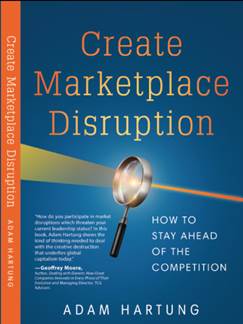The newsletters of Adam Hartung
Keynote Speaker, Managing Partner, Author on Trends

How does your company manage risk?
Companies prepare for the most visible risks, such as in-kind competition, supplier failures or regulatory change. They build “moats” around the core business up and down the value chain. They buy suppliers, buy distributors, use industry standards to increase cost of entry, add new features and bundled pricing plans, influence favorable legislation – countless other techniques.
Risk management has been focused on defending the status quo – not anticipating change. But moats and walls were defeated by innovative competitors that created new attacks such as the trebuchet and Greek fire that made the risk management defenses obsolete.
By planning only on traditional threats, companies spend far too much time, and money, improving their “moats” or “walls.” Meanwhile competitors, and customers, are finding a way around, over or under traditional business protection defenses. The company keeps improving status quo defenses — instead of anticipating trends that can nullify old business protections.
Western Union turned down an offer to buy the patent for Alexander Graham Bell’s new telephone, preferring instead to invest in the telegraph. Western Union even ran wires for Bell’s new innovation, not accepting that the telephone (which was vastly more expensive) could obsolete their “core product.”
Kodak invented the digital camera, but dismissed it as an expensive, low resolution novelty while developing more amateur film products and more efficient film manufacturing.
Too often companies adopt innovative technology, but as a way to become more efficient at what they always did rather than seeing the risk innovations create in their core markets.
Encyclopedia Britannica embraced desktop publishing technology to lower costs in their core business: printing. Leaders dismissed CDs and on-line sites as a book replacement.
Rand McNally adopted online mapping, but focused entirely on digitizing paper maps. They totally missed the market for two simpler, but higher volume end user needs – …directions… while traveling in your car.
Can you think of situations like this in your industry, or company? Have folks seen the new technologies, but refused to accept they could completely change competition?
You can avoid missing the disruptive innovation problems, and achieve the next plateau.
Does your outward-looking team want to drive change?
Gathering and interpreting trend information from end-users, competitors and the environment would have identified the risks to the status quo of companies like Rand McNally. They needed a risk monitoring approach outside the status quo organization which would have created a view of potentially business altering, even business obsoleting, changes.
Is your company reluctant to consider marketplace innovations as real threats?
Status quo risk is the most difficult risk to assess, and to overcome. It is created by biases built into the existing business and the existing value delivery system. Status quo risk is the risk created by not knowing what you don’t know – and thus are unable to perceive or prepare for.
Only by analyzing assumptions and biases can we discover how new technologies and business practices threaten sales and profits as adoption changes the marketplace.
Perhaps we can help your business by:
- performing assessments of trends, technologies and market changes applied to your business.
- facilitating workshops to identify your status quo fixations, and limitations.
- coaching you to identify likely disruptive events or technologies so that you can recognize potential game changers for your industry.
- developing approaches for adopting, and even participating in, market shifts.
- preparing timelines and resource models to better plan for the future.
Send us an email to set up a call, or call us now, to discuss what we’ve done for dozens of clients that overcame Status Quo Risk and can apply to your situation.
Listen to my recent Sirius XM interview on how Sears and Kmart lost to Status Quo Risk
For more on how to include trends in your planning, I’ve created a “how-to” that you can adapt for your team. See my Status Quo Risk Management Playbook.
Upcoming Conference Workshops on Status Quo Risk Management
NACD Director Professionalism Course June Chicago
NACD Director Professionalism Course August California
Recent Forbes Columns:
Tesla Model 3 – What a Game Changer Looks Like
Apple – Better, Faster, Cheaper Is Not Disruptive Innovation. But Is That OK?
Why Activists Succeed – and Will Change Yahoo



